When it comes to cooking and especially baking (desserts take the cherry on top here), the English language is so rich in words, that I think sometimes even native speakers struggle to read through the steps of a recipe.
You have your blind baking, curdling, docking (not related to spaceships), dredging, folding, proving, slaking, sifting, steeping, tempering. To name just a few verbs.
There’s even a whole page dedicated to baking terms, in French.
Or in the words of my husband (who is French),
That's something that really puts me off in a lot of recipe books and websites. I need to do several google searches to understand what the heck they're talking about. Even if there is a specific word for each action in culinary English, I do not want to learn a new vocabulary, I just want to cook something.
For those of you who ever heard about sourdough, it will be no surprise that it put me off, too. In fact, I started making the sourdough levain (the “yeast”, which makes the bread rise) at least a few times, and each time except the last, it ended with it being scraped off into the compost bin.
Very tedious process. In the end, I just decided to bear with it and actually have patience. Which is not easy for a 3-second-patience person like me.
I will save the how to make the sourdough starter for another post, because it’s a process which deserves its own time in the spotlight. Until then, you can see this recipe from Jamie Oliver. It is the recipe I used to make my starter a few months ago.
Brief History
In the Encyclopedia of Food Microbiology, Michael Gaenzle writes: "One of the oldest sourdough breads dates from 3700 BCE and was excavated in Switzerland, but the origin of sourdough fermentation likely relates to the origin of agriculture in the Fertile Crescent and Egypt several thousand years earlier"
From Egypt, the sourdough bread-making spread North to Ancient Greece. Then the Romans learned the art of bread baking from the Greeks, making improvements in kneading and baking.
In other words, to say that this is the traditional way of making bread is an understatement.
Sourdough remained the usual way of baking bread in Europe throughout the Middle Ages. Bread made from 100% rye flour, popular in the Northern half of Europe (including in Estonia, where we live), is usually leavened with sourdough.
The Recipe
Ingredients:
100g sourdough starter, nice and bubbly
2 small teaspoons salt
475g white flour (bread flour, wholegrain, whichever is your favorite)
325g like warm water
Method (it’s a little long, bear with me):
Mix all the ingredients together in a larger bowl, with a spoon, until they are just mixed (no need for kneading 😄).
Cover with a moist kitchen towel and let it sit for 30minutes.
Using a bit of warm water on your fingers to not glue to the dough, grab one end of it, stretch it and fold it on top of the dough. Do this 4 times in total, once for each side, like four quarters of a circle.
Let it rest for another 30 minutes, then stretch it and fold, 4 times again, same as above.
One last time, let it rest for another 30 minutes, then stretch it and fold, 4 times.
Cover the bowl with a moist towel or clingfilm and let it rest on the kitchen counter for about 4-6 hours (until it more or less doubles in size). If you leave it too long, it will be a wet, gloopy mess and you won’t be able to work it.
Gently scrape all the dough out of the bowl onto a floured board (heavily floured!, not lightly, from my experience).
Gently shape it into a rough ball by pushing at its bottom part. As much as possible, try not to break the air bubbles inside.
Slowly ease it into a Pyrex lined with baking paper (yes, I use Pyrex instead of a Dutch oven, and I am unapologetic, it is MUCH cheaper and works well for me).
Cover it with its lid and put it in the fridge overnight, for about 12-15hours. You can even leave it there for up to 48hours if you are short on time the next day.
While the oven warms, make a line or a design on the top of your bread with a very sharp knife or a razor, about 2 cm deep, this will give it space to expand while baking. Sift flour on top, to make the design stand out.
Warm the oven to 235°C / 455°F and then place your covered pyrex inside, for 25-30 minutes.
Remove the lid and then continue baking for another 20 minutes until it is pretty and golden on top.
You can check that it’s baked with a steak thermometer stabbed into one of the cracks, it should be around 90°C / 195°F inside.
I managed to write this in 13 steps, all the easy sourdough recipes I found previously had at least 20-24 steps! 🙄
I hope the steps and pictures are clear enough. This method works for me, and I hope it is easy enough to replicate.
It is also the least labor intensive solution I found, instead of tens of minutes of exhausting kneading.
The only downside is the need to be around for 1h30 for the 3x repeated stretching and folding.
There are SO many opinions and alternatives to the steps of making sourdough, that at least for me, it felt quite discouraging at first.


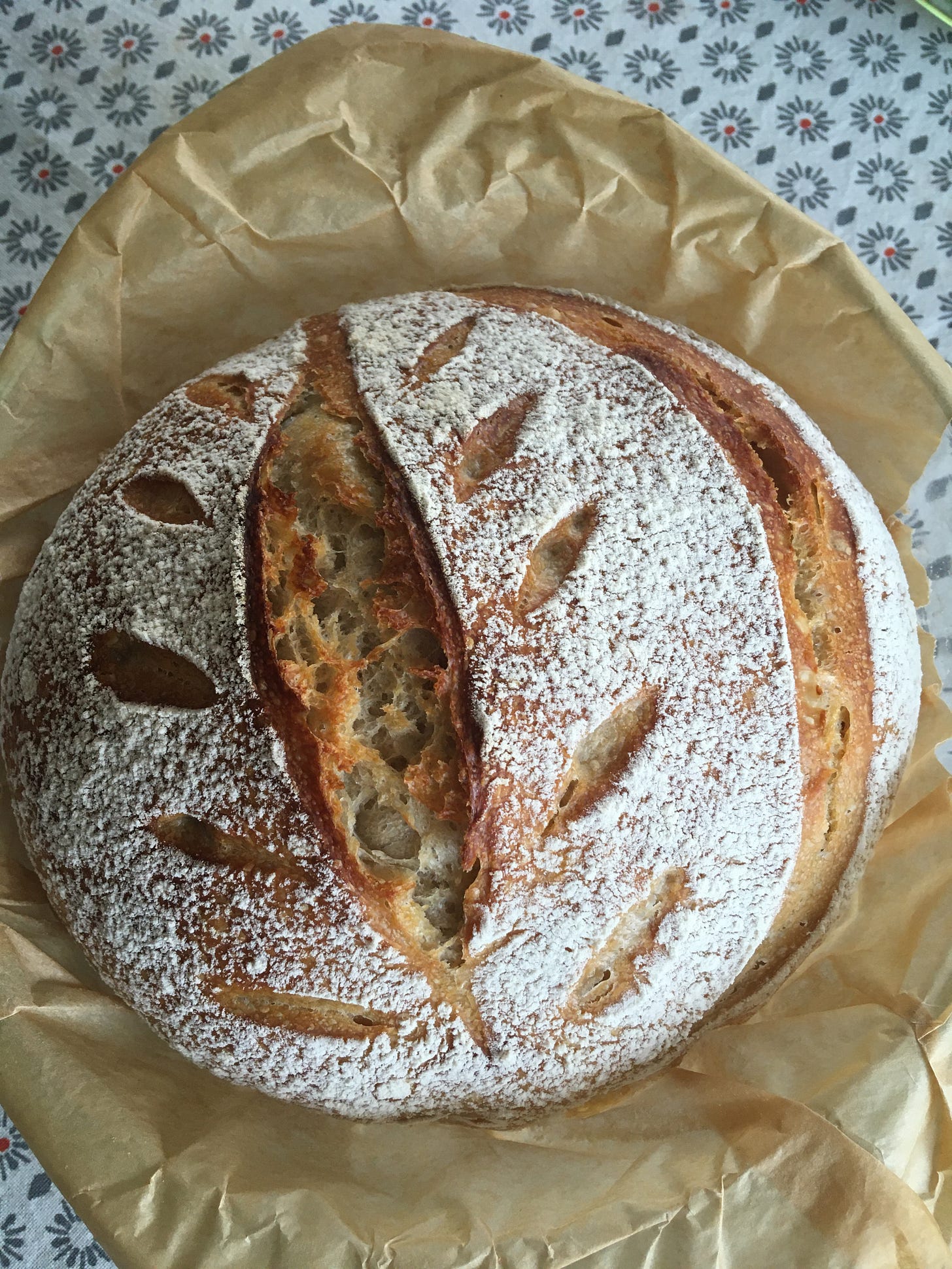
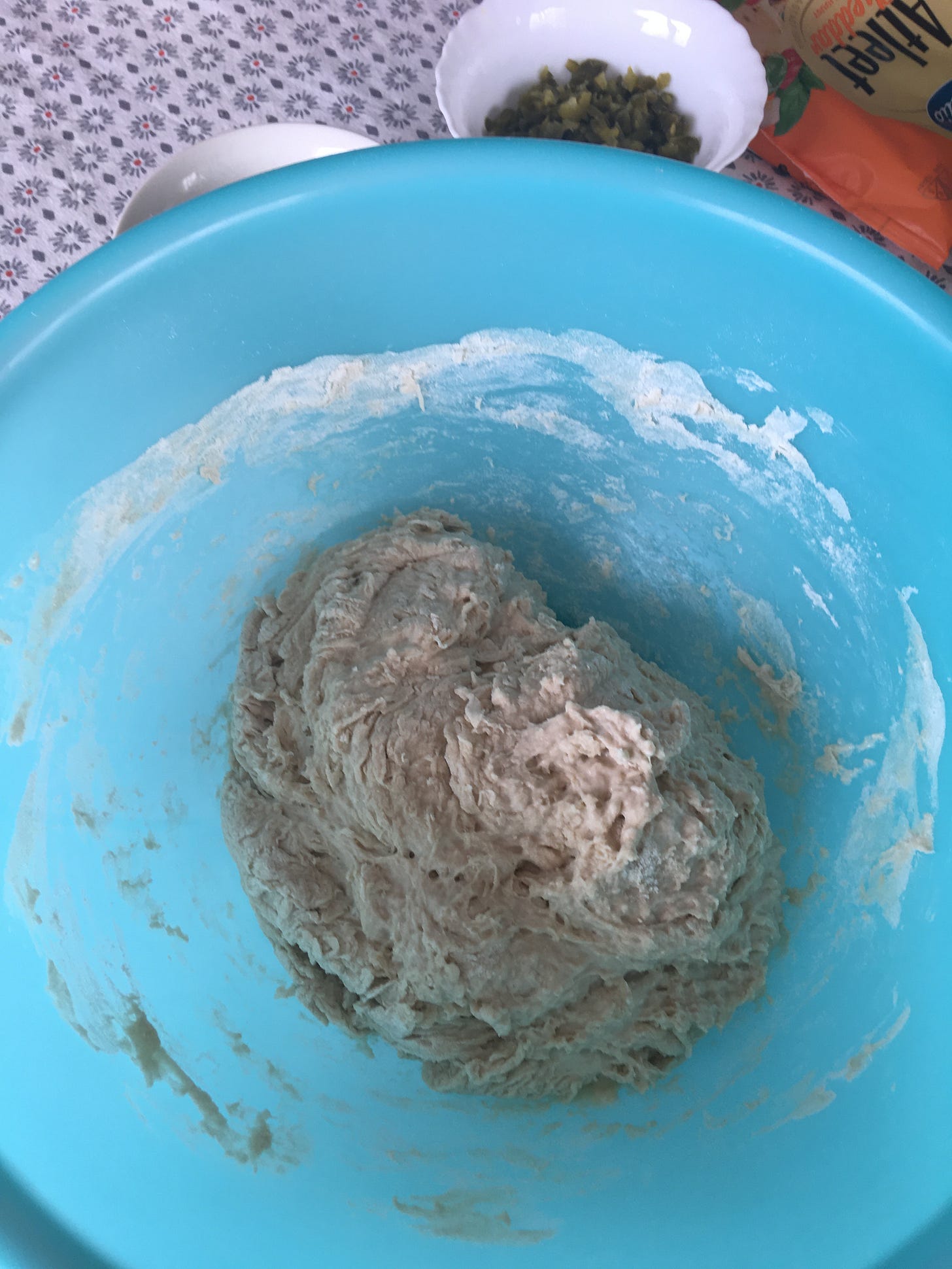
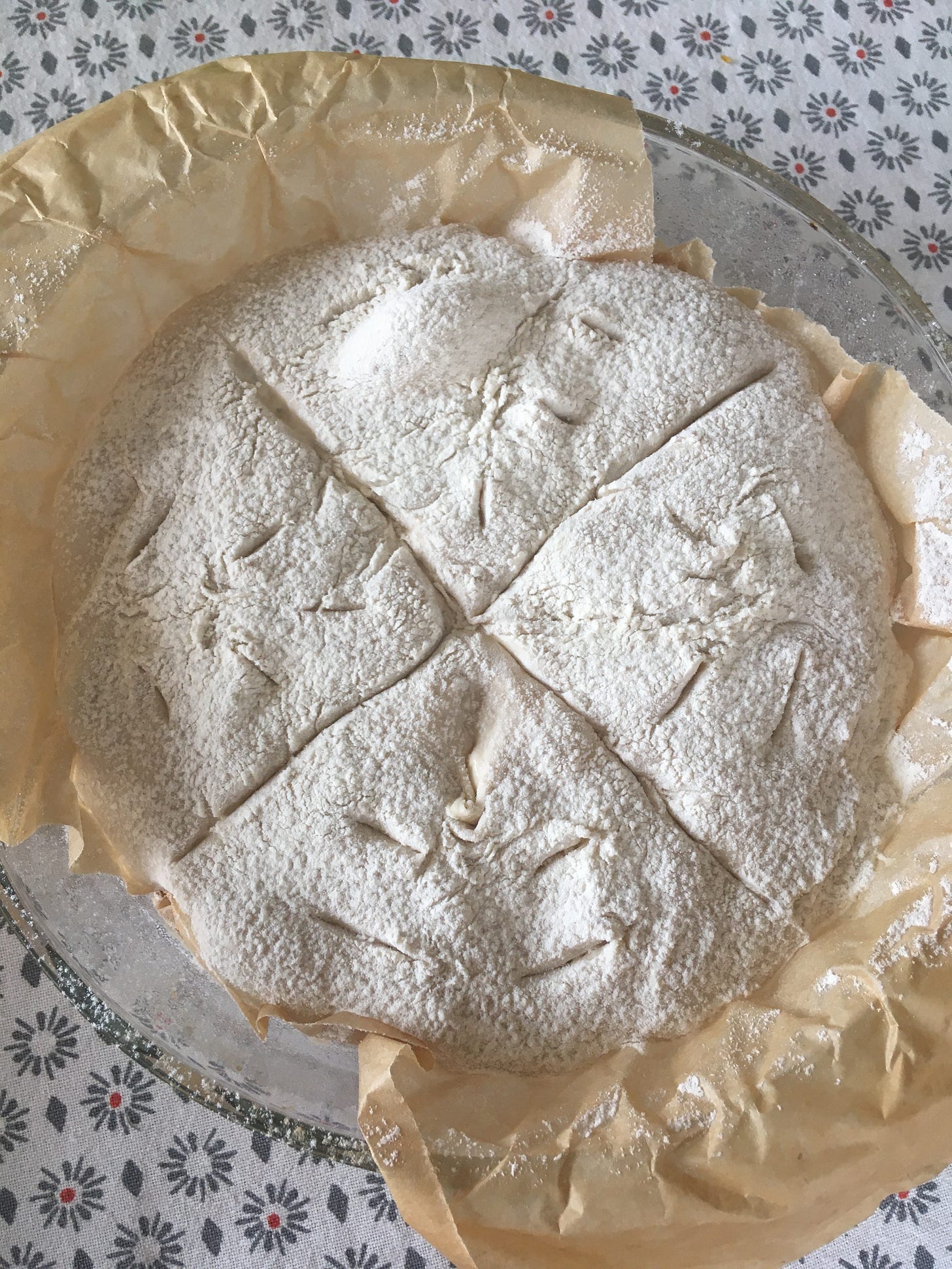
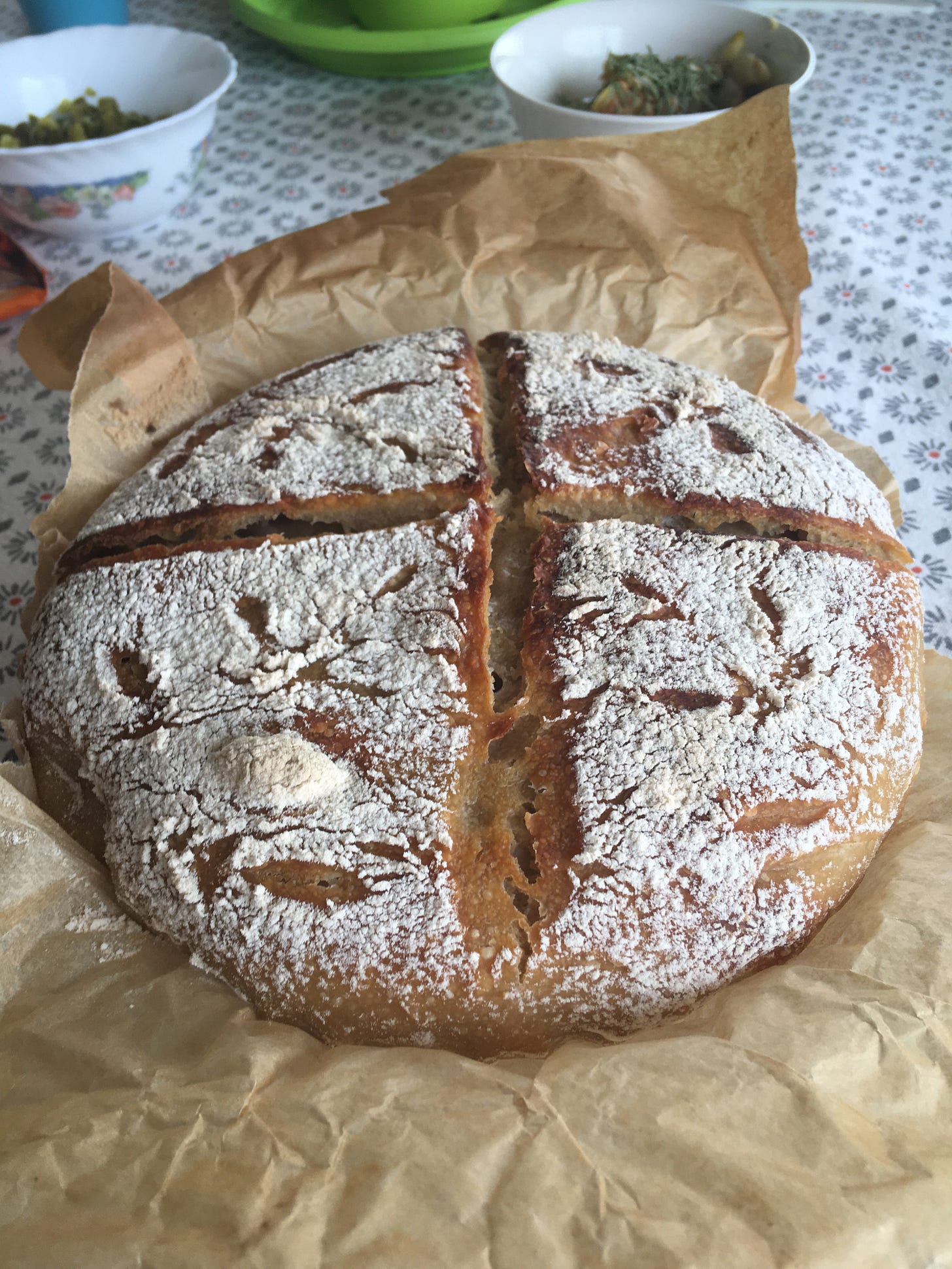
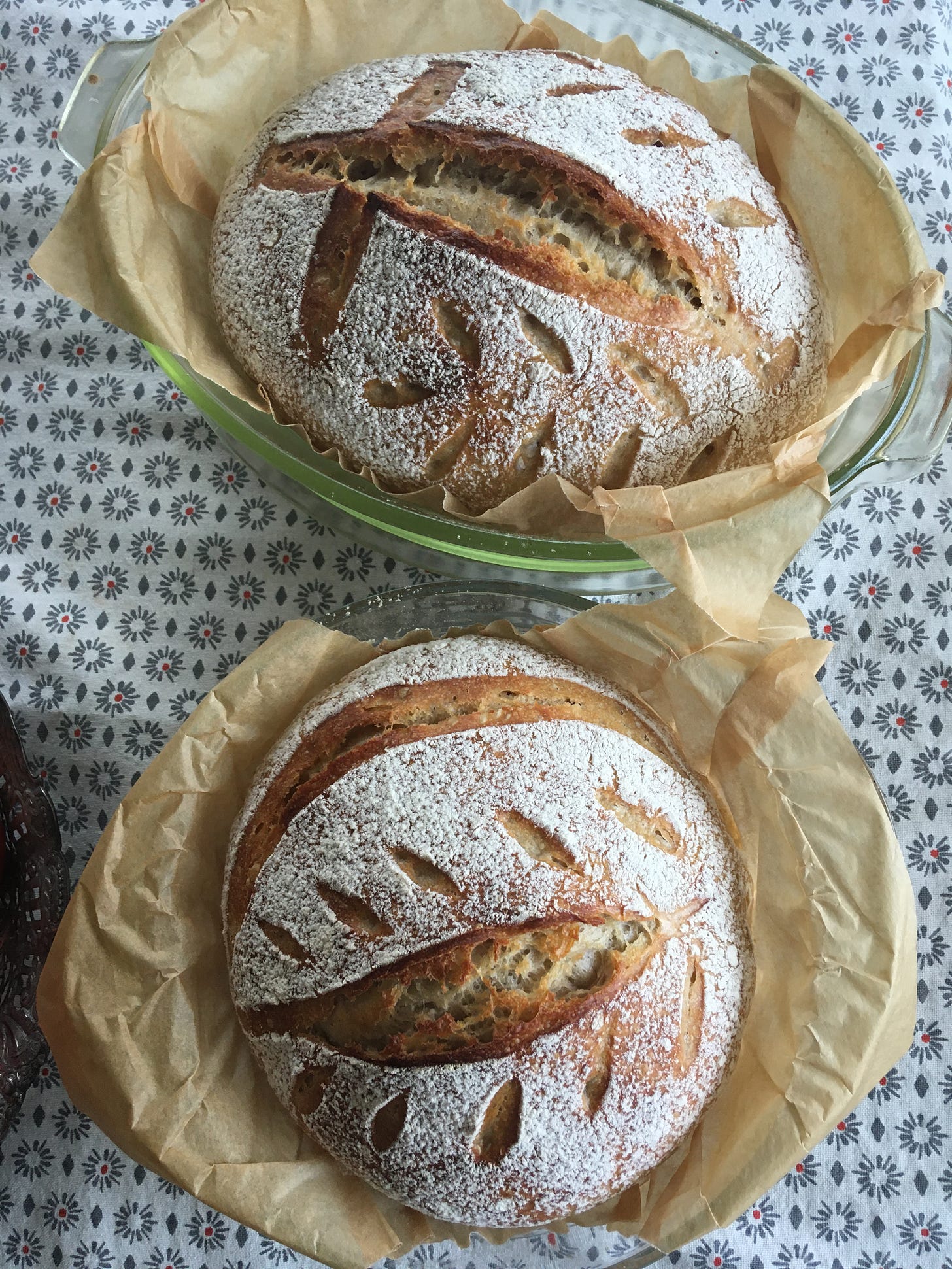
I have long wanted to try baking sourdough, and now, with your straightforward recipe, it think it’s doable for me. Other recipes I came across seemed so very complicated. Now, I just need to go look at your Jamie Oliver starter link!
PS, lovely pics too. You have a definite knack for food styling!